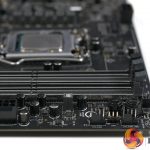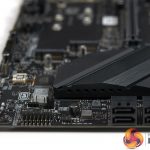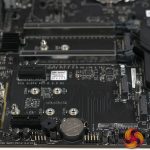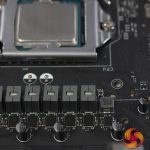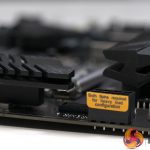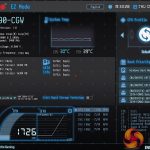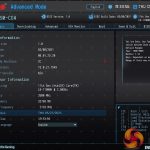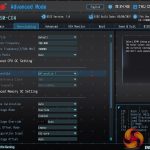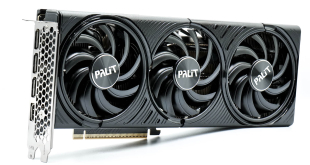The Hardware
The layout and specification of the SuperO C9Z590-CGW is perfectly decent, although there are a few points worth noting. The first is that the board does not support RGB which seems like a curious omission on an enthusiast platform.
The second point is the VRM set-up which uses 6x Infineon TDA21490 90A power stages which looks a bit lightweight when compared with Gigabyte's Z590 Aorus Pro AX or the Asus ROG Strix Z590-E Gaming WiFi which respectively employ 12 and 14 power stages for the CPU. That does not mean SuperO has got anything wrong.
Indeed the maths tells us this set-up can supply about 350W to a Core i9-11900K while running at 50 percent load (or lower) so technically it is absolutely fine and has quite a decent margin in hand. The fact is we have got used to 10, 12, 14 or even 16 power stages and the consequence is that the VRM arrangement on the SuperO C9Z590-CGW may ring alarm bells with prospective customers.
The BIOS is problematic and works in pretty much the manner you would expect for version 1.0 as it clearly needs a bit more work. As we demonstrate in our video, navigation in the BIOS is a bit clunky but our bigger concern is that the BIOS does not support Intel Adaptive Boost, which is pretty much the only reason why you might consider buying a Z590 motherboard.
Furthermore the BIOS follows Intel's policies when it decides how much power to supply. If you select the profile for a stock Intel CPU cooler the power will boost to 134W and then reduce to a mere 65W. Using the profile for a tower air cooler gives a boost to 177W and then long duration of 125W. The most ambitious profile for a water cooler boosts to 250W and then reduces to 125W.
In a sense this is admirable as it shows that SuperO respects Intel's technology however it is also problematic as an 8-core Rocket Lake CPU draws at least 200W under load, which can easily rise to 250W or even 300W in extreme cases, so we can be certain that SuperO is leaving performance on the table. In our video we describe how we tested with both the 125W power limit and also manually set a 250W power limit .
Test system:
- CPU: Intel Core i9-11900K
- Memory: 32GB G.Skill TridentZ Neo DDR4-3600MHz Dual Channel
- Motherboard: SuperO C9Z590-CGW BIOS 1.0
- CPU cooler: MSI MPG Core Liquid K360
- Graphics: Sapphire RX 6800 XT 16GB
- Storage: Sabrent Rocket 4.0 M.2 NVMe
- Power Supply: Seasonic Prime Platinum 1300W
- OS: Windows 10 Pro
 KitGuru KitGuru.net – Tech News | Hardware News | Hardware Reviews | IOS | Mobile | Gaming | Graphics Cards
KitGuru KitGuru.net – Tech News | Hardware News | Hardware Reviews | IOS | Mobile | Gaming | Graphics Cards


